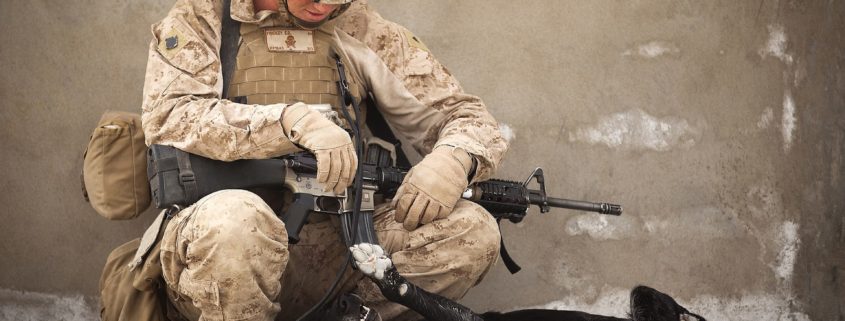Courage Training 101
I’m listening to the audio version of Brené Brown’s book, Dare to Lead. At one minute and fifty-three seconds into the book I hear this….
“I looked at these brave soldiers and said, ‘Vulnerability is the emotion that we experience during times of uncertainty, risk, and emotional exposure. Can you give me a single example of courage that you’ve witnessed in another soldier or in your own life that did not require vulnerability?’
Complete silence. Crickets.
Finally a young man spoke up. He said, ‘No ma’am. Three tours…I can’t think of a single act of courage that doesn’t require managing massive vulnerability.’”
I heard those words and something buried deep down inside came bursting to the surface, catching me completely off guard. Even though it was five years ago (and 28 days…but who’s counting), tears rolled down my cheeks as I said quietly to myself, “I was so scared…I was so scared….” This is embarrassing to admit (vulnerability bared for all); I sunk to the floor, curled up in a fetal position, and full-on ugly cried for half an hour. For the first time, I allowed myself to feel the terror of that split-second, deadly dangerous moment when lives were at stake and I was in charge.
We were in a situation of tremendous exposure to uncertainty and risk. And I was responsible. There was no time for thinking or emotional processing, only action. I‘m not a soldier, haven’t gone to war, and am definitely not making a comparison, but I do know what real courage feels like. This is it…no matter how vulnerable you feel, life-threatening or not, you choose to put others first.
Whether you call it vulnerability, fear, or anxiety we all know the feeling of something threatening our safety, whether real or imaginary. It could be an oncoming semi truck or a snap comment from a co-worker that sets your teeth on edge. Your survival brain doesn’t know the difference.
Your underlying beliefs will drive whether you act courageously or react self-protectively.
The only way to shape your underlying beliefs, and become a more courageous person, is to first recognize them by getting really, really honest with yourself.
1. Do you believe you are responsible for your own life and for the well-being of others entrusted to your care?
☐ Yes: you have a strong sense of personal integrity and leadership.
☐ Uncertain or No: practice eliminating blame. Listen to yourself and others; you will hear the unmistakable and all too common sound of blame. Recognize and mentally label it by saying to yourself, “Blame is lame.”
2. Do you believe that no matter what happens, you are capable of dealing with it?
☐ Yes: you have confidence and personal fortitude.
☐ Uncertain or No: practice taking more risks. Place yourself in uncomfortable situations and face what scares you. Remind yourself to “do the hard thing.”
3. Do you believe there is always hope for a positive outcome?
☐ Yes: you have optimism and faith in others.
☐ Uncertain or No: practice finding gratitude in all things. Keep a daily gratitude journal. No matter how crappy the day may be, write down at least three things you can be thankful for. Whenever you tell yourself or others a story about something bad happening, practice ending the story with, “But on the bright side…!”
You can’t wait for times of “uncertainty, risk, and emotional exposure” to count on suddenly producing courage. It won’t happen. Soldiers train for “managing massive vulnerability” in battle and so must you. Vulnerability isn’t weakness; how you manage it makes the difference. Hopefully you will never face life-threatening circumstances, but you will most certainly face conversations where you feel threatened. Becoming a person who leads and impacts the lives of others takes daily training in the underlying beliefs that drive courageous action. Own your vulnerability; just don’t let it own you. Train for Courage.



